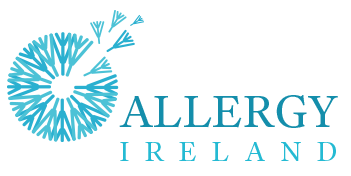-
Allergies are very common in Ireland. About 29% of Irish people suffer from an allergy and this is rising. These rates are similar to those found in other European countries.
-
Roughly 15% of the population have complex allergy problems requiring specialist care.
-
10% of children and young adults have more than one allergic or atopic disorder such as food allergy, eczema, asthma and allergic rhinitis.
Food Allergy
-
IgE Mediated Food Allergy is found in 5% of young Irish children and about 2% of older children and adults. The majority of children who have food allergy also suffer from another allergic condition such as asthma, allergic rhinitis and in particular eczema.
-
Food allergy typically results in symptoms such as rash, facial swelling or airway symptoms within 30 minutes of ingestion. Deaths due to severe allergic reactions known as anaphylaxis are thankfully rare and are estimated to occur in 1 in 1-3 million people per year. These fatalities are more commonly triggered by medications, blood transfusions or insect stings rather than food allergy.
-
Food intolerance, as opposed to food allergy, typically result in symptoms such as bloating, flatulence, diarrhoea and abdominal pain. Food intolerances do not result in dangerous or life threatening allergy symptoms and adrenaline autoinjector pens are never required. There is no reliable scientific method of testing for food intolerances and instead an exclusion diet followed by reintroduction is used.
Allergic Rhinitis / Hay Fever
-
Allergic Rhinitis (nasal/sinus allergy) is the most common allergic condition and affects about 26% of Irish people. The prevalence in Europe is estimated to vary between 17-29% and it is thought to affect at least 400 million people worldwide.
-
Interestingly, up to 40% of people who suffer from Allergic Rhinitis are also asthmatics.
-
The prevalence of Allergic Rhinitis (nose/sinus allergies) is rising. The ISAAC study (2006) found an increase in the prevalence of Allergic Rhinitis from 13% to 19% during an 8 year period in 13 year olds. A smaller study in Cork demonstrated an increase in prevalence from 7.6% to 10.6% over a 5 year period in 6-9 year olds.
-
Allergic Conjunctivitis (eye allergy) is typically caused by airborne allergens such as pollen or house dust mite and is therefore also linked with nose and sinus allergy.
-
Allergic rhinitis increases the risk of developing sinusitis.
Asthma
-
Asthma is a common chronic respiratory condition which affects 10% in Irish children and 7% of adults. The prevalence of asthma in Ireland is among the highest in the world.
-
Asthma is the most common chronic disease of both children and adults in Ireland.
-
In 2011, Asthma was responsible for 20,000 attendances at Irish hospital emergency departments.
-
The link between allergic rhinitis and asthma is well documented and almost 90% of asthmatics also have allergic rhinitis. Treatment of co-existing allergic rhinitis is recommended by the GINA guidelines to optimise asthma control.
Eczema
-
Eczema (atopic dermatitis) is a common chronic inflammatory skin condition. Eczema affects 20% of Irish children and it is found in 3% of Irish adults.
-
Eczema usually begins before the age of 2 and the classic presentation is eczema localised to the cheeks at about 3-6 months of age.
-
Eczema usually improves with age as the skin becomes thicker and more robust. Therefore, 85% of children grow out of their asthma.
-
Exposure to irritants or the development of an allergy to an inhalant such as house dust mite, mould or pollen can lead to eczema relapse and exacerbation.
Urticaria / Hives
-
Acute Urticaria (hives) affects 9% of the population at some point during their life while the lifetime prevalence of Chronic Urticaria is 2%.
-
Urticaria is almost twice as common in women than men. Peak incidence occurs between 20 and 40 years of age.
-
Adults suffering from Chronic Urticaria have significantly higher rates of allergic rhinitis, asthma and eczema while children do not.
-
Prognosis of Chronic Urticaria
-
In adults, 80% achieve remission within 1 year.
-
In children, just 25% of cases resolve within 3 years but thankfully 96% achieve remission within 7 years.
-

